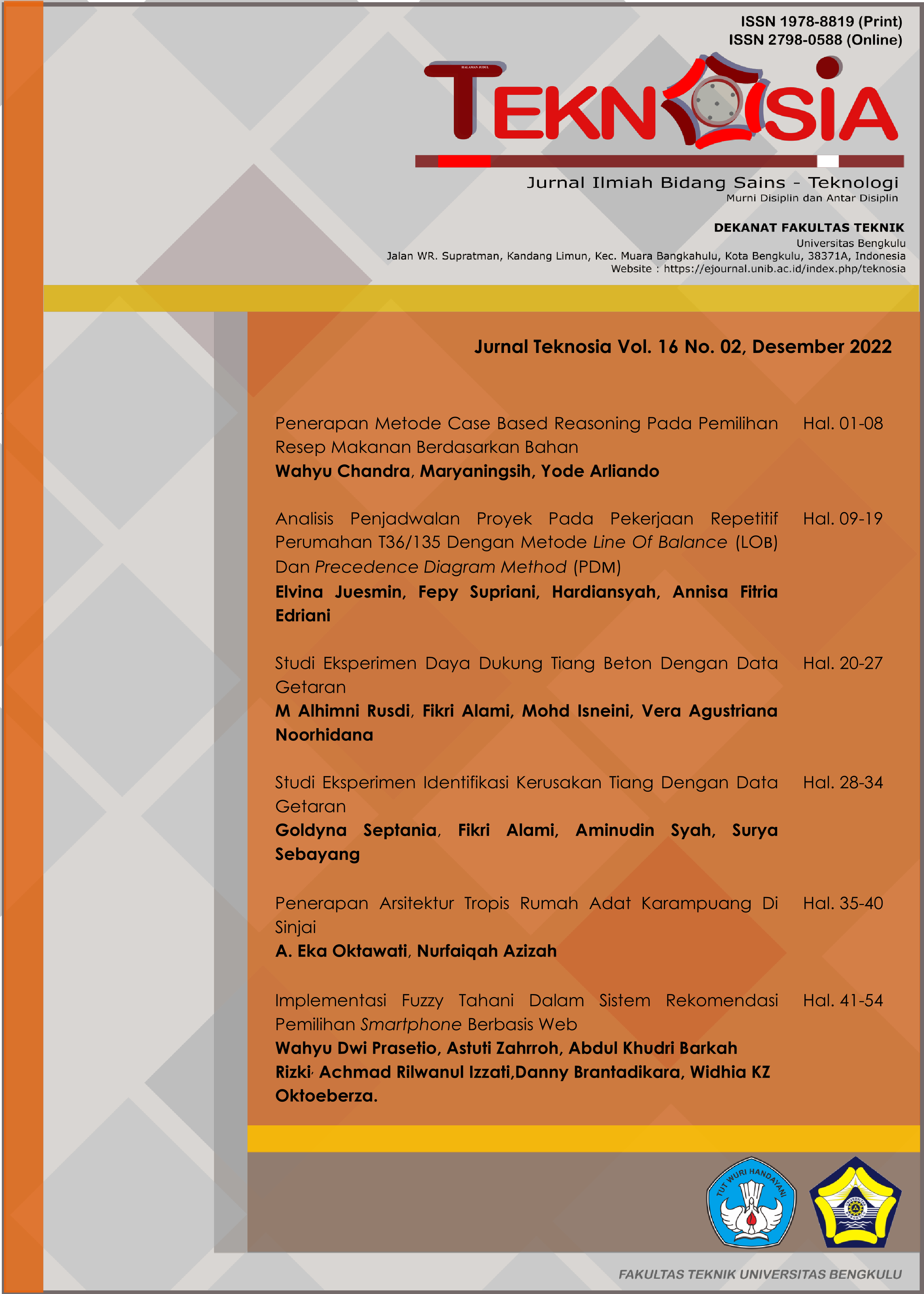Main Article Content
Abstract
Abstract: The foundation is a very important structural element considering its function, and it is necessary to know the strength of its bearing capacity. This study aims to determine the bearing capacity of the installed foundation using vibration data based on low strain and the tool used is called a 3-axis accelerometer. In this study, what is meant by carrying capacity is Pcr (critical load/bending load), which is precisely when the concrete experiences the first crack. There are 2 variations of concrete test objects ini this study : plain concrete and reinforced concrete with a size of 20 cm x 20 cm x 100 cm. The test object is planted in the soil as deep as 90 cm, after which it is anchored by a tool called the 3-axis accelerometer, then given several variations of the load so that the test can be carried out. After testing, the vibration data will be converted to the frequency domain, then the natural frequency will be plotted into a linear curve along with the applied load so that the Pcr value of the concrete pile is obtained. After that, the Pcr value obtained will be compared with the SAP 2000 modeling as proof. The results of this study showed that the deviation between the Pcr value with the experimental method and the SAP 2000 modeling Pcr value was 0.22% in plain concrete, and 1.10% in reinforced concrete. This proves that the bearing capacity of concrete piles (Pcr) can be known accurately by using vibration data.
Article Details
Copyright (c) 2023 M Alhimni Rusdi M Alhimni Rusdi

This work is licensed under a Creative Commons Attribution-ShareAlike 4.0 International License.
Authors who publish with this journal agree with the following terms:
- Authors retain copyright and grant the journal the right of first publication with the work simultaneously licensed under a Creative Commons Attribution License that allows others to share the work with an acknowledgement of the work's authorship and initial publication in this journal.
- Authors are able to enter into separate, additional contractual arrangements for the non-exclusive distribution of the journal's published version of the work (e.g., post it to an institutional repository or publish it in a book), with an acknowledgement of its initial publication in this journal.
- Authors are permitted and encouraged to post their work online (e.g., in institutional repositories or on their website) prior to and during the submission process, as it can lead to productive exchanges, as well as earlier and greater citation of published work (See The Effect of Open Access).
- This work is licensed under a Creative Commons Attribution-ShareAlike 4.0 International License.
